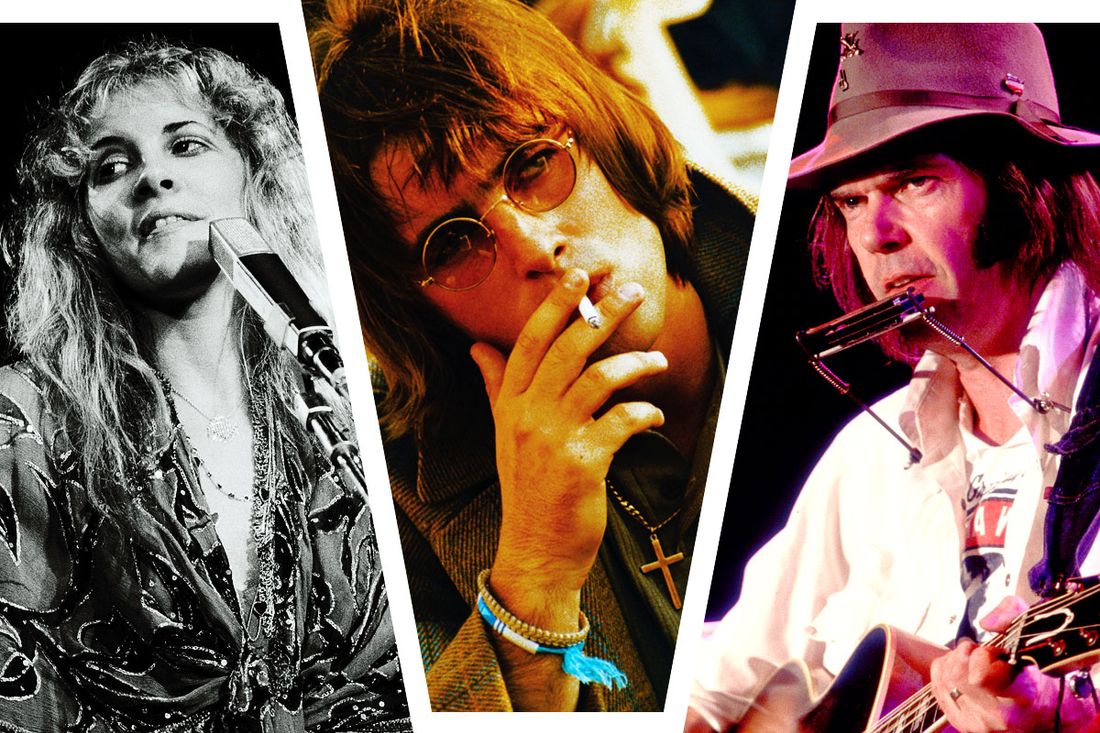
Musician biopics often struggle when they try to cover an entire lifetime – they can be slow-moving or overly polished to satisfy record companies and families. But two recent films about famous rock stars took a different approach, focusing on specific, and sometimes difficult, periods in their careers. Springsteen: Deliver Me From Nowhere explores the making of Bruce Springsteen’s 1982 album, Nebraska, while A Complete Unknown looks at Bob Dylan’s early folk years, up to his controversial decision to switch to electric guitar in 1965. (Timothée Chalamet received an Oscar nomination for his portrayal of Dylan, and Jeremy Allen White is a strong contender for an award this year.) Critics generally praised both films for their unique storytelling, though Dylan’s film is currently performing better at the box office than Springsteen’s.
As a huge film buff, I’ve been wondering what musician’s life story deserves to be told on the big screen next – maybe focusing on a really pivotal month or year. So, I reached out to eight biographers who’ve written about some incredible, yet surprisingly overlooked, musical legends. I asked them to pitch the most dramatic and interesting period of their subject’s life, the one that would make for a truly compelling movie. It’s surprising how many famous artists haven’t had their story told in a major film yet! And hey, if any of these pitches actually get made, I’m definitely hoping for a producer credit!
Prince
The Purple Rain sessions.
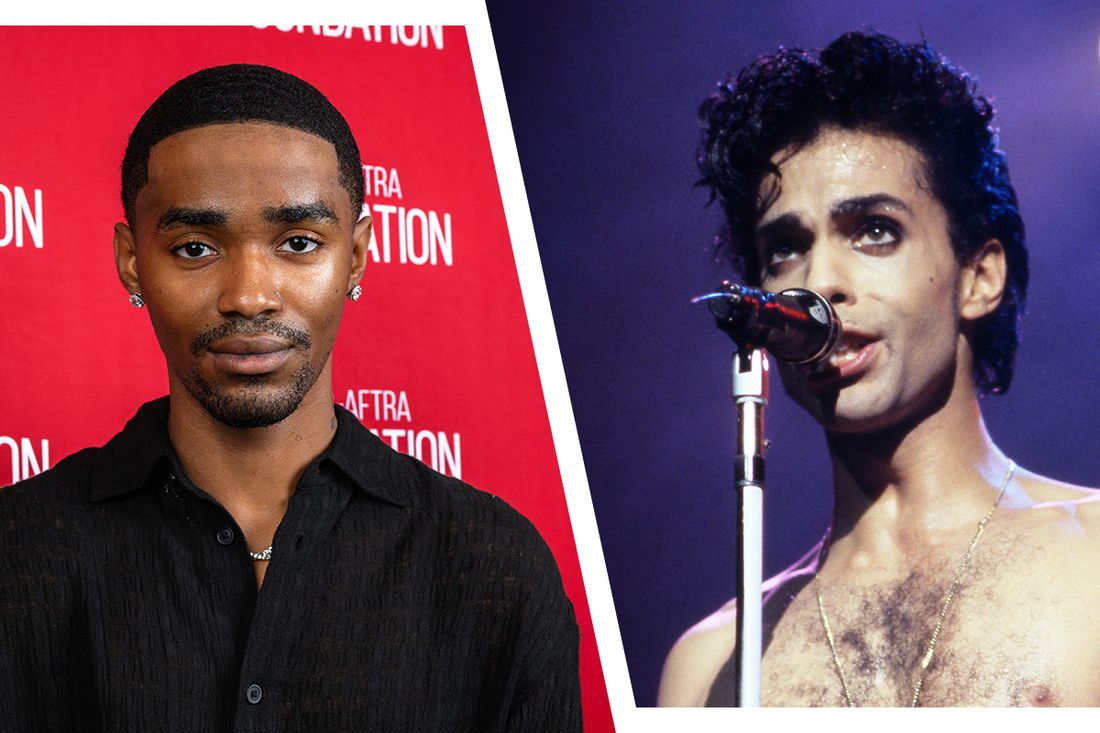
Matt Thorne, author of Prince (2013), discusses the story behind the film Purple Rain. Prince admired movies like Amadeus, The Idolmaker, and A Star Is Born. Unlike artists like Dylan or Springsteen, Prince wasn’t just focused on his own fame—he wanted to elevate his entire crew and Minneapolis as a whole. Many people don’t realize how much he struggled early in his career. One great story is about his friendship with Chris Moon, who ran an advertising agency and owned a recording studio. Chris let Prince use the studio whenever he needed. Prince would bring his whole band, and one day, Chris overheard drumming while Prince was alone. He peeked in and saw Prince playing to a professional level. Chris got a drink and returned to find Prince equally skilled on the piano, and then on bass guitar. Prince was a remarkably versatile musician, capable of mastering any instrument.
The film Purple Rain doesn’t focus on Prince’s initial breakthrough, but it still shows the struggles he faced. He performed for Warner Bros. hoping they’d fund a tour, but it went terribly. He had to completely regroup and start over – it’s about the difficult path to becoming a superstar. Prince always wanted to present his story as if success was inevitable, but many unexpected setbacks could have easily derailed his career. There’s a more raw and revealing story waiting to be told. For instance, when he visited his sister in New York, he met someone from a small record label who advised him to become a stereotypical 1970s romantic singer and wear flashy clothes. People kept trying to mold him into something he wasn’t, and he could have easily lost his way. Originally, Purple Rain was titled Dreams. As the film developed, it became more polished and less grounded in reality. A look at Prince’s original vision for the story of his early life would be fascinating.
Beyond the hard work, Prince also enjoyed the process of building his career. He took an evening class about the music industry and connected with people in Minneapolis who taught him about contracts and navigating the personalities involved. This less-known side of his story also included a period of living with his friend, André Cymone, after being asked to leave his aunt’s house, where they created a practice space in the basement. Before achieving fame, he’d already recorded five albums, refining his unique sound. While artists like Bob Dylan often moved from a city to make music, Prince aimed to bring the world to Minneapolis, declaring it the new center of the music universe and promising stardom for everyone involved.
Should be portrayed by …
Myles Truitt is a talented performer. I first noticed him in a New Edition TV series, and I know he’s a capable singer. He has a unique presence – a combination of strength and a more subtle, fluid quality that I think he can really explore in his work.
Madonna
Her Ray of Light reawakening.

Lucy O’Brien, in her 2007 book Madonna: Like an Icon, explains that Madonna was surprised and hurt by the strong negative reaction to her Sex book, which openly discussed female desire. This led her to take a step back for a few years, resulting in the more subdued album Bedtime Stories. She was essentially trying to rebuild her image and figure out her next move. The period before Ray of Light was a time of self-discovery and reevaluation. While she had achieved great success as a bold and confident performer, she felt she had reached the top of what was expected of her in popular music. She realized people were limiting her, seeing her as simply a capable singer, dancer, and marketer. She wanted to demonstrate her true artistic and musical talent, and this desire ultimately led to the creation of Ray of Light.
She prepared to play the role of Evita, gaining confidence along the way. The birth of her daughter, Lourdes, marked a turning point. She wrote about it for Vanity Fair, feeling her life had fundamentally changed. It’s as if Lourdes’s birth divided her career into two distinct phases. Her album Ray of Light really showcases this period of personal growth and how she moved past the pressures of fame. Her decision to collaborate with William Orbit was unexpected; he wasn’t the typical studio professional she was used to. Initially, she was surprised by his simple setup – just a few keyboards and a sampler, not a fancy studio. But this simplicity actually liberated her songwriting. William’s background was in electronic dance music, and he helped unlock a new level of creativity within her.
Let me tell you about Ray of Light. It’s a truly inspiring song, all about finding a new beginning. But then, she completely flips the script with the closing track, Mer Girl. It’s gut-wrenching, honestly. She’s singing about the loss of her mother and the thought of being buried alongside her. You can feel this realization wash over her in the lyrics – like she’s been avoiding this pain her entire life. It’s a deeply moving musical moment. I heard William Orbit say she was completely drained after recording it, almost visibly shaken by how vulnerable she’d allowed herself to be. It felt like her own Dark Side of the Moon, a really personal and honest exploration. And people connected with it. It was a massive success – multi-platinum, and she finally took home four Grammys, which was huge for her. She even admitted at the ceremony that after 16 years in the industry, this was her first win! I really believe this album marked the biggest turning point of her entire career.
Should be portrayed by …
Even though Kate Winslet is more established now, I think she would have been perfect for the Ray of Light role. She naturally projects both a glowing quality and inner strength on screen.
Dolly Parton
Breaking free from The Porter Wagoner Show.
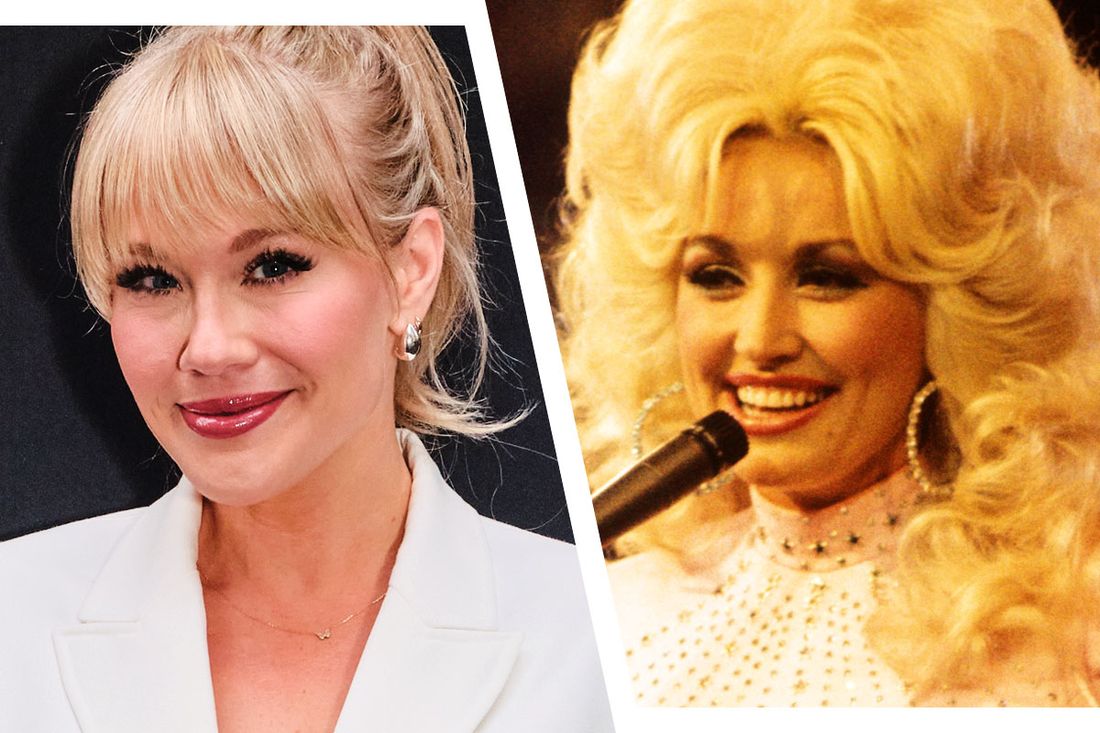
Dolly Parton is often remembered for just a few hit songs like “Jolene,” “I Will Always Love You,” and “9 to 5,” but there’s much more to her story. Her early career, particularly the 1970s, is a crucial period to understand. It’s the time when she moved from her roots in Tennessee to Nashville and, importantly, navigated a complex relationship with Porter Wagoner. While this involved overcoming challenges in a male-dominated industry, Dolly’s primary ambition wasn’t simply to find romantic happiness; she was striving for independence as an artist. Though the dynamic with Wagoner is key to understanding her growth, it’s important to focus on Dolly’s journey as an individual and not present it as a shared story. Her struggle for autonomy was vital in shaping her into the icon she is today.
Dolly joined Porter Wagoner and his show in 1967, and initially, she was just grateful to have a job. She ended up staying for seven years, though the last two were difficult. She hadn’t actively sought out the opportunity; Porter was looking for a new female singer after his previous one left. He’d heard her songs around Nashville and contacted her, and she assumed he wanted to purchase some of her material since she was having some success as a songwriter at the time. She wasn’t performing much on stage yet. In reality, Porter was evaluating her potential as a performer for his show. He hired her, and she began earning a substantial salary – $8,000 was a significant amount of money in 1967.
Initially, audiences were hesitant to embrace Dolly, as they still preferred the previous singer, Norma Jean. Dolly was understandably hurt and cried, but Porter encouraged her, predicting they would eventually accept her. He helped launch her career, and she ultimately became more popular than Norma Jean, and even sometimes overshadowed him. Although her five-year contract ended, it took a couple more years for her to fully gain her independence. Dolly was a talented singer and songwriter who didn’t want to be known only as someone’s supporting act. Soon after leaving, she achieved significant success with several chart-topping albums.
Should be portrayed by …
Carrie St. Louis was fantastic as ‘middle Dolly’ in the Nashville musical this summer. She truly captured Dolly’s essence – I often forgot I wasn’t watching and hearing the real Dolly Parton! Her performance was beautiful and incredibly convincing.
Neil Young
His topsy-turvy 1980s.
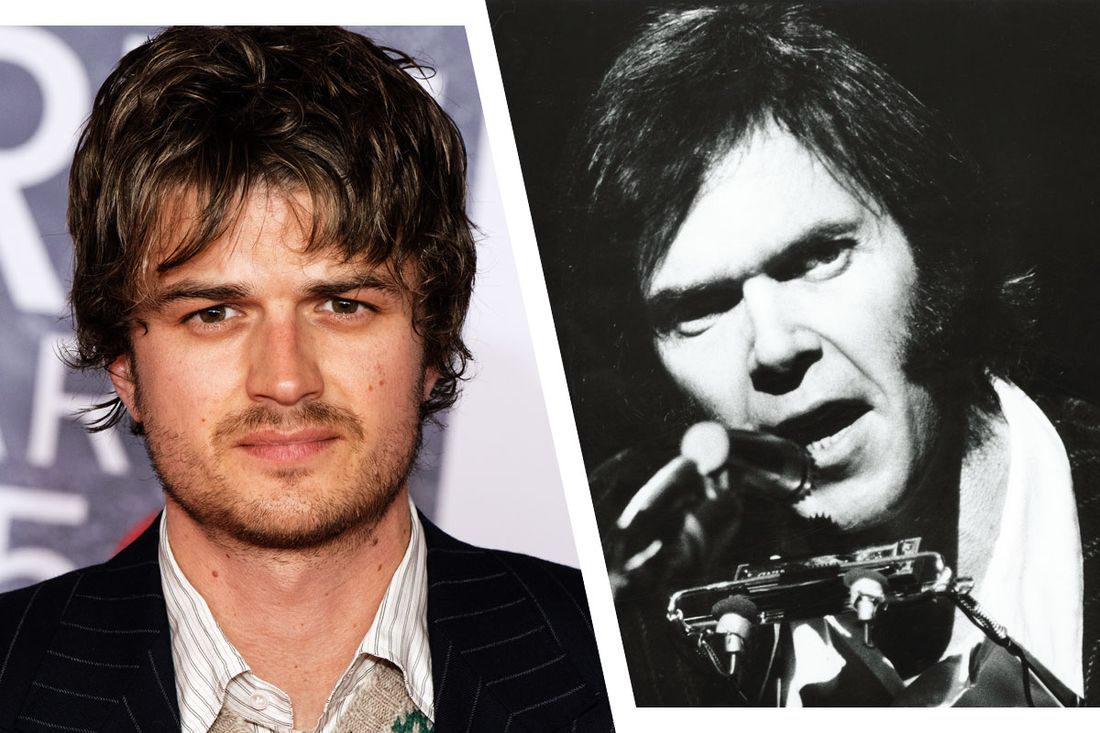
As someone who’s followed Neil Young’s career closely, I think a really compelling documentary would need to tackle a controversial period most biopics avoid: the mid-80s. While Young himself might not agree, starting with that infamous homophobic comment he made in Melody Maker in 1985 is key. Then, you’ve got the lawsuit from Geffen Records—essentially, they sued him for not making Neil Young albums!—and the release of Trans, that really experimental, electronic record. It was a time when he seemed to be unraveling, and honestly, it’s always left fans puzzled. We may never fully understand what was going on internally, but there are fascinating stories within that period. He famously said everything was ‘one big song,’ and that rings true – his life and work are deeply connected. But things really started to shift in the early ’80s with personal struggles. His son was born with cerebral palsy, joining another son with the same condition, and that led him to explore technology, almost seeking solutions through it. Unfortunately, those explorations manifested publicly in ways no one anticipated, and it created a lot of confusion around his artistic direction at the time.
Neil Young is known for his thoughtful, solo acoustic work, but he’s also been part of iconic bands like Buffalo Springfield and Crosby, Stills, Nash & Young, and Crazy Horse. It’s compelling to see how he also became a dedicated family man and actively participated in his son’s life. His story reaches a satisfying conclusion when he performs “Rockin’ in the Free World” on Saturday Night Live in 1989 – a perfect way to end the narrative. He overcame challenges to reach the top repeatedly, actually, about four or five times throughout his career.
Should by portrayed by …
Joe Keery would be a great fit for the role. He’s convincingly played a young adult on Stranger Things for years – it almost feels like he’s already middle-aged! Plus, he’s a talented musician with his band, Djo, so he’s got the musical skills covered.
Billy Joel
“Piano Man,” of course.
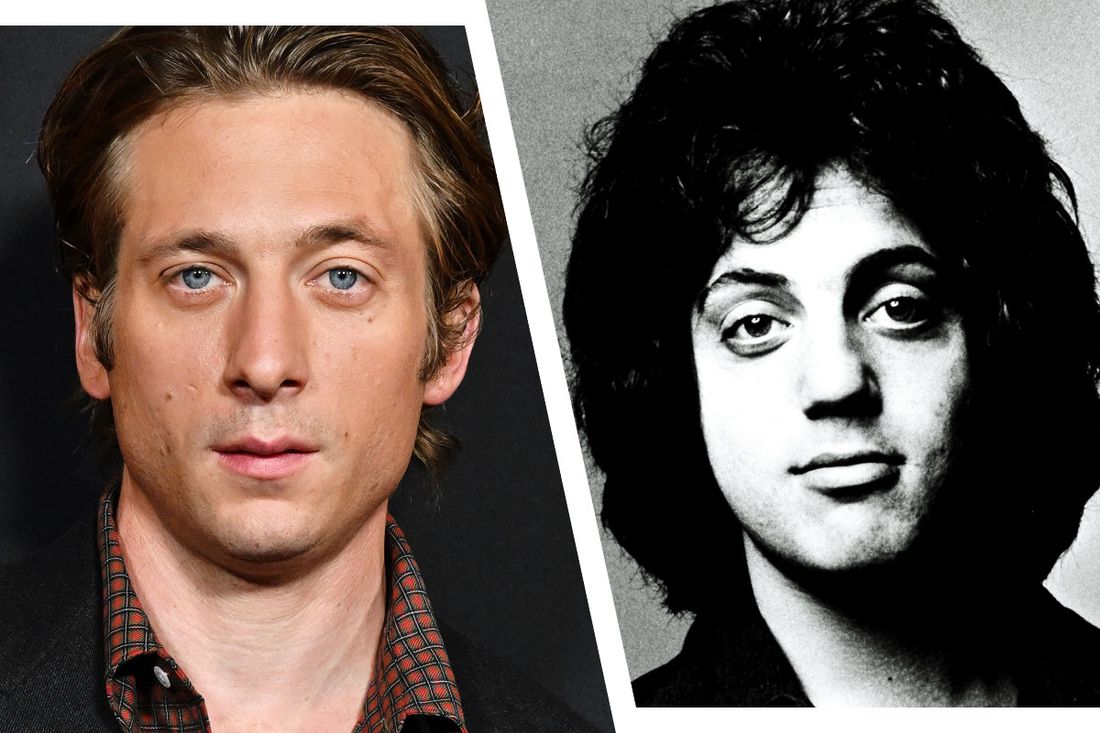
As a huge Billy Joel fan, I’ve always been fascinated by his journey, and Fred Schruers’ biography really nails it. It seems like any film about Joel has to build to the creation of “Piano Man” – it’s the song that really launched him, and it’s always the big finale of his concerts, even if he’d probably like to switch things up. The story needs to ask why it took him so long to find success. The answer, as Schruers points out, is that Billy initially wanted to be a songwriter for others, and he wasn’t entirely comfortable performing himself. He was a struggling musician on Long Island, and a key early connection was Jon Small, who was married to Elizabeth Weber – Billy’s first wife. And let me tell you, the Weber family were… complicated, to say the least. Schruers even compares them to the Borgias! It’s also interesting to note Billy wasn’t part of the wealthy “Five Towns” crowd; he grew up in more modest circumstances in Hicksville, which really shaped his perspective.
He befriended a family who had more money and a lavish lifestyle, typical of Long Island. Despite their different backgrounds, he and Jon started working together. Billy joined Jon’s band, The Hassles, and later spent several years in Los Angeles, where he wrote “Piano Man.” The song’s lasting popularity and personal story are what make it so significant. It was essentially his farewell to Hollywood and the beginning of his rise to greater success.
Should be portrayed by …
It’s interesting – I actually see Jeremy Allen White resembling Billy Joel more than Bruce Springsteen. I think he had the potential to really embody Billy Joel’s persona. It’s a shame, though, that the Springsteen movie didn’t perform well at the box office – in Hollywood, having a well-known actor often makes all the difference.
Oasis
When it all fell apart.

As a huge Oasis fan, I’ve always thought a biopic would be far more compelling after their massive Knebworth concerts in ’96. Everyone knows the early years, but that’s when things really got interesting. Imagine starting the film there – they’d conquered the UK, but you could feel this ‘What now?’ energy. It quickly spiraled when Liam refused to go to America for the tour, Noel went ahead without him, and then… well, a massive fight led to Noel temporarily leaving! Suddenly, the future of the band was completely uncertain. They tried to solve everything by rushing into recording Be Here Now, but honestly, the album ended up being way too overblown and lavish – a bit of a reflection of everything that was going wrong at the time.
Many of their close friends and collaborators drifted away, and the recording process became chaotic. The album initially sold incredibly well, becoming the fastest-selling in the U.K. at the time, but the immense anticipation ultimately created unrealistic expectations. At 72 minutes long, it felt overly ambitious. Their subsequent tour was extravagant and over-the-top, reminiscent of the mockumentary Spinal Tap with its elaborate props. Noel Gallagher went through a period of excess, which he jokingly compared to “fat-Elvis.” After the tour, he managed to overcome his drug use, but then developed an addiction to prescription medication. He channeled his experiences into their next album, Standing on the Shoulder of Giants, which reflected a period of recovery and readjustment.
The period between March 1997 and September 1999 is relatively undocumented. The band recorded during this time in the south of France to avoid British media attention. Two original members, Paul Arthurs (Bonehead) and Paul McGuigan (Guigsy), left because they were no longer enjoying it. While their album, Standing on the Shoulder of Giants, received poor reviews, the Gallagher brothers had to find two new musicians to continue. The tour was difficult, culminating in a major physical fight between the brothers in Barcelona – their biggest one ever. However, after the tour ended, they resolved their differences and felt optimistic about the future with the new lineup. This era is a less-discussed part of their history. Simultaneously, the British music scene was changing, moving away from guitar-based music that had defined the 90s towards different styles of pop, which also contributed to the shift in public interest for Oasis.
Should be portrayed by …
Joseph Gilgun could be a great fit for the role of Liam, although some aging effects might be needed to match Liam’s appearance in the 1990s. I also think Cillian Murphy would be perfect as Noel. He has the seriousness and weight the character requires. Noel is a more complex and thoughtful person than Liam, but there’s a danger of the actors simply imitating the Gallagher brothers, who are so well-known.
Carly Simon
Joining the Laurel Canyon crowd.

According to Sheila Weller, author of Girls Like Us, Carly Simon openly acknowledged she anticipated experiencing emotional pain. Weller describes Simon as remarkably direct and honest about her feelings. Weller believes a film about Simon’s life should start in April 1971 with the release of her debut song, “That’s the Way I’ve Always Heard It Should Be.” Simon opened for Cat Stevens at the Troubadour, and the two later became romantically involved. The song was groundbreaking as one of the first pop hits where a woman expressed a desire to remain independent and avoid commitment—a sentiment typically voiced by men in music. This came during a period of social change, fueled by the rise of feminism and Ms. magazine, alongside the release of iconic albums like Carole King’s Tapestry and Joni Mitchell’s Blue. While King connected with everyday audiences and Mitchell maintained a more distant, artistic persona, it was Simon who penned the song that truly captured the spirit of the feminist movement.
Before 1971, Carly had never visited California, which was unusual given her privileged upbringing. She’d never even flown there from the East Coast! The trip was thrilling, though she still felt her familiar stage fright. This period really introduced her to the country and challenged perceptions of women’s sexuality – she demonstrated that a woman could have many partners without being judged. A woman of wealth and status, she openly discussed affairs with prominent figures like Warren Beatty, Kris Kristofferson, and Mick Jagger. She found love and married James Taylor, and continued to be a complex and fascinating person throughout her life. She represented a modern, feminist ideal – someone many women admired and identified with.
Should be portrayed by …
Kat Dennings would be a great choice for the role. She’s tall and has a striking look. The actress needs to have a strong, expressive personality to play Carly, someone who’s attractive but also relatable and fun – the kind of person you’d enjoy having a casual conversation with and sharing stories with.
Stevie Nicks
From Fritz to Buckingham Nicks to Fleetwood Mac.

According to author Zoë Howe, understanding Stevie Nicks’s early life is key. A pivotal moment was meeting Lindsey Buckingham as teenagers – they first sang together at a youth club and later joined a band called Fritz, which was similar to a high school group. Nicks had a knack for improving any band she joined, and Fritz was no exception, opening for major artists like Santana, Jefferson Airplane, and Janis Joplin. During this time, she developed her stage presence and performance style, learning from artists like Janis and Grace Slick, as well as stylish women in the audience. She was like a magpie, collecting influences to create a unique persona. A difficult decision to leave Fritz and move to Los Angeles followed, but it ultimately led to the formation of Buckingham Nicks. They quickly gained attention while opening for established acts, and even caught the eye of manager Bill Graham.
Producer Keith Olsen played a huge role in launching the careers of Stevie Nicks and Lindsey Buckingham. When they arrived in Los Angeles, Olsen immediately recognized the unique power of their voices, believing they were meant to sing together and could achieve more as a duo than with a full band. He was a key supporter, though not everyone in their band, Fritz, saw things the same way. It’s easy to picture their success unfolding – Fritz gaining popularity, then Buckingham Nicks, and finally Fleetwood Mac – but the Buckingham Nicks album actually struggled. Despite their passion for the record, it didn’t receive the promotion it needed, leaving them frustrated and confused about why it wasn’t successful. Stevie had to work as a waitress to keep them financially afloat during that difficult time.
It might seem odd, but Lindsey Buckingham and Stevie Nicks initially hesitated when Fleetwood Mac asked them to join the band. Keith had to persuade them on New Year’s Eve. They were focused on making their duo, Buckingham Nicks, work and recording a second album, but that night everything changed. It was a pivotal moment. Fleetwood Mac had been looking for a guitarist to replace Bob Welch, and they considered Lindsey. However, it was clear Lindsey and Stevie were inseparable – they insisted on joining together. Everyone immediately recognized Stevie’s talent, and it was undeniable. Still, Stevie always felt like she was an afterthought, constantly wondering if she needed to prove herself. This insecurity, surprisingly, fueled her creativity, and she carried that feeling with her for a long time.
Should be portrayed by …
I’m a huge fan of Kiernan Shipka! Everyone knows her as Sabrina from Chilling Adventures of Sabrina, and she definitely brought a magical quality to that role. But what a lot of people don’t realize is she’s a really talented singer too! It’s amazing to see someone so versatile.
Read More
- ETH PREDICTION. ETH cryptocurrency
- Gold Rate Forecast
- Cantarella: Dominion of Qualia launches for PC via Steam in 2026
- AI VTuber Neuro-Sama Just Obliterated Her Own Massive Twitch World Record
- They Nest (2000) Movie Review
- Ripple’s New Partner: A Game Changer or Just Another Crypto Fad?
- Super Animal Royale: All Mole Transportation Network Locations Guide
- Jynxzi’s R9 Haircut: The Bet That Broke the Internet
- James Cameron’s ‘Avatar 3’ Promise Didn’t Pan Out – Here’s What Went Wrong
- Apple TV’s Foundation Is Saving Science Fiction
2025-11-05 16:59